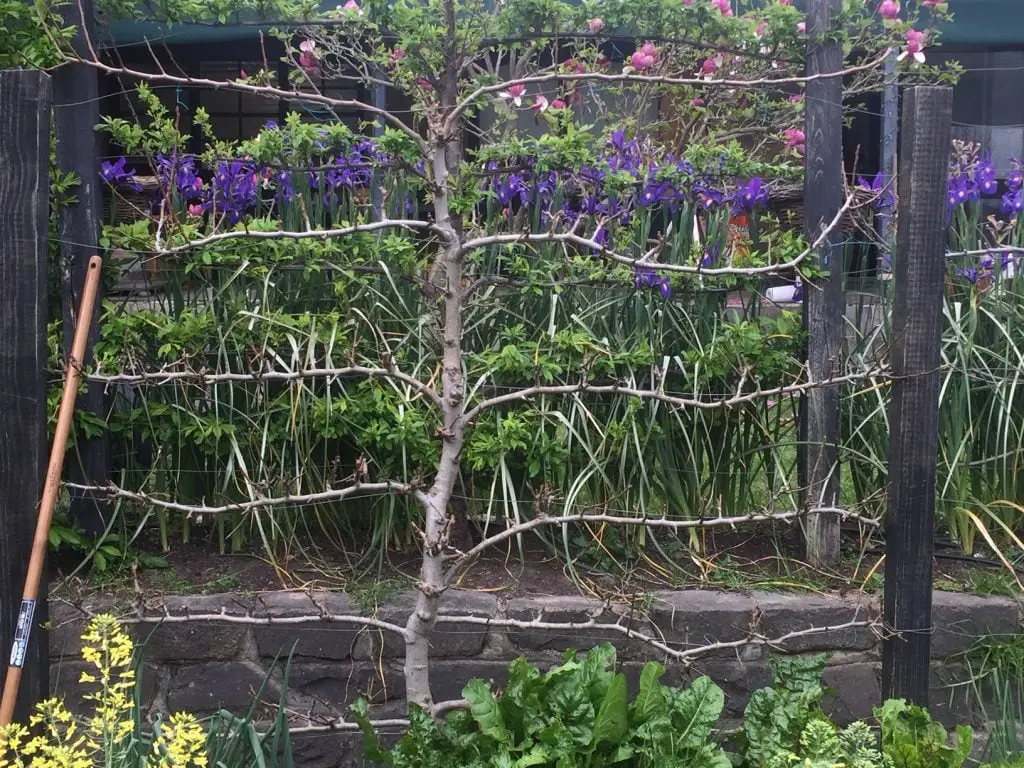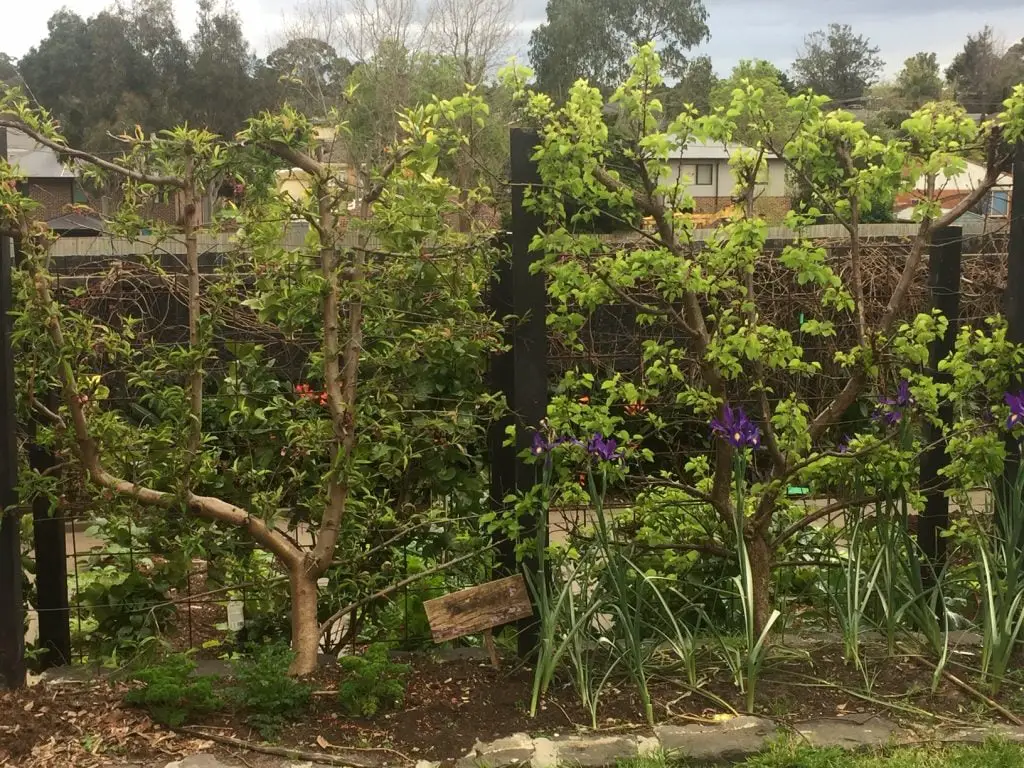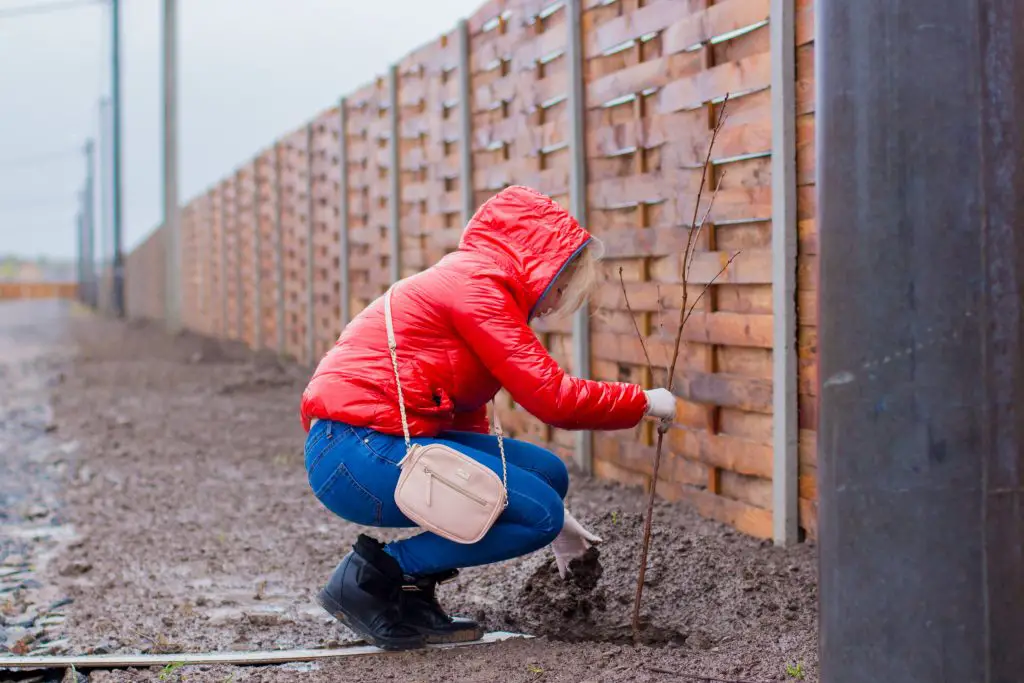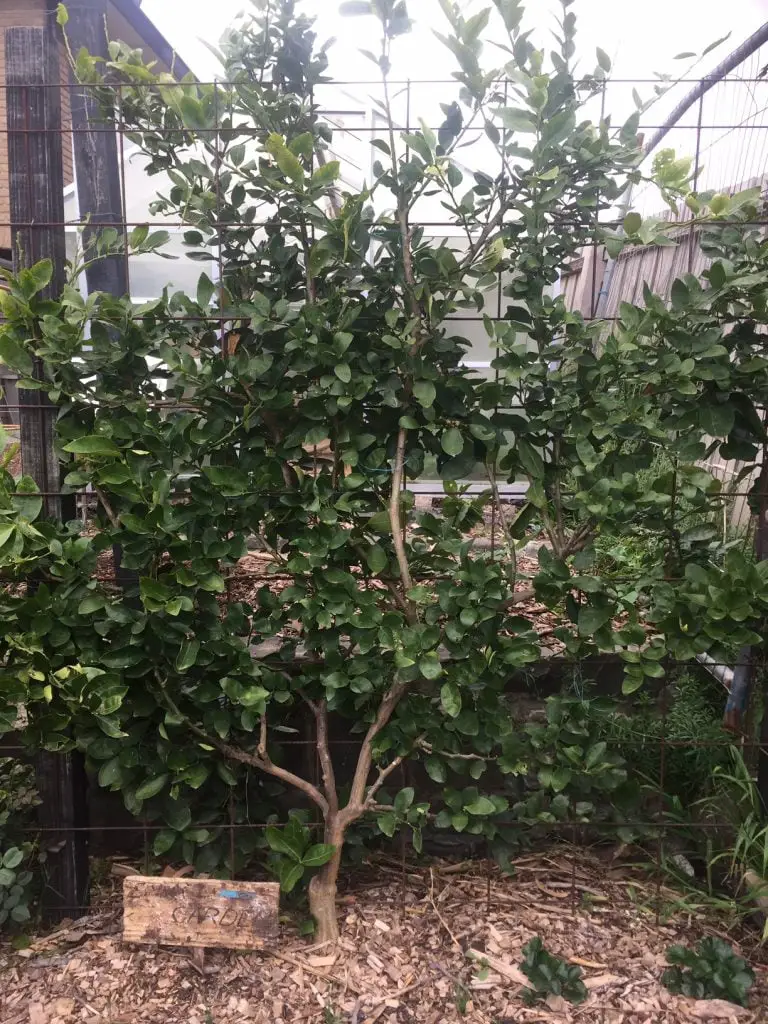Can You Espalier A Lemon Tree? It is possible to espalier almost any type of tree, including a Lemon Tree. Lemon trees can be shaped into an informal espalier, that will take up little space and still produce plenty of fruit. While it is common to espalier fruit trees up against a wall, there is no reason why this needs to be the case. In some gardens, espalier trees have been used to produce living garden walls, that divide up a garden into small garden rooms.
What Is The Difference Between Formal and Informal Espalier Trees?
A formal espalier tree is one that has been pruned to create a defined structure of branches, that are usually symmetrical in shape. The most common form is a T form, in which there is a central stem, with branches coming off either side horizontally at regular intervals, most commonly at a spacing of around 30 cm (12 inches). To achieve this, a support structure is required that is designed to hold the tree in shape, while it is growing. To maintain the formal appearance of the tree, any side shoots coming off the branches are removed, to maintain the shape of the tree. It is possible to create many different shapes.

However, when creating an informal espalier tree, there is no defined branch structure created. Instead, the branches are allowed to grow in a natural way and they are often tied back onto the support structure to maintain a two-dimensional flat shape. Like formal espaliers, any branches that cannot be readily tied onto the structure are removed, to maintain a compact growth habit.
The informal style of espalier is most suited to Citrus trees of any type, including the Lemon tree, as it is almost impossible to create a formal structure with Citrus trees. The reason for this is that the branches tend to grow at an angle of 45 degrees or greater, and they also lack the flexibility to be bent into formal shapes. The fruit trees that are most suited to the formal style are Apples, Pears, Cherries, and Plum trees.
To see more about how to create formal espalier trees watch the video below.
How To Create An Espaliered Lemon Tree
Step 1 – Selecting The Location
The first consideration when planting a tree is the location. Lemon trees require a location that is sunny, with rich, moist, and well-drained soil. Fruit trees in general, benefit from compost and regular feeding with an organic fertilizer. The pH of the soil should ideally be around 6.0 to 7.0. To learn more about the importance of pH, go to https://planyourpatch.com/why-is-ph-important-in-soil/.
Espalier trees are often placed against the wall of an existing structure such as fence, house, or shed, however, this does not necessarily need to be the case. Espalier trees have the potential to be used as garden dividers, to create smaller garden rooms. Citrus trees are particularly suitable for this, as they are evergreen and can be used to create a solid wall, year-round. If you are planning to use the trees in this way, it is best to plant them 1.8m (6 ft) apart, as this will allow the wall to become a continuous structure within a couple of years.
Step 2 – Creating The Support Structure
Once a site has been selected, a support structure needs to be erected. Structures can be created with a range of materials, that include Wire, Bamboo Stakes, Wood, and Wire Fencing Mesh. However, prefabricated structures, such as Wood Timber Lattice or Reo Mesh, are my preferred materials for this job. The reason for this, is that they are easy to erect, relatively sturdy, providing stable support for the trees, and they provide numerous anchor points to tie the tree to. This is important for informal espaliers, as it is impossible to know in advance, points that the tree will need to be tied.

Step 3 – Selecting And Planting The Tree
Once the structure has been created, it is time to plant the tree. When selecting a tree from the nursery or garden center, alternatively, a Lemon Tree can be purchased online from Yougarden.com. When purchasing a tree it is better to select a less mature tree, that is healthy and not pot bound. Smaller trees are generally preferred, because it is easier to train young trees to the shape desired, and it is also cheaper. In the case of Citrus, it is also important to avoid trees with signs of Gaul Wasps, which appear as lumps on the branches of the tree limbs.
When planting the tree dig the hole in front of the center of the espalier support with a spade about 30cm (1 ft) wider than the pot the lemon tree is currently in. The depth of the hole should be approximately the height of the pot.
Remove the tree from the pot and tease the roots out a little bit with your fingers. This will encourage the tree’s roots to spread out into the surrounding soil. Place the tree in the hole, so the surface of the root ball is level with the surrounding soil. Refill the hole with soil, until it is level and the tree sits at the correct depth. Ensure that the soil is firm, by pushing on it with your heel, as this will avoid a divot forming later.
Water the Lemon tree thoroughly and spread a 5-10cm (2 to 4 inch) thick layer of organic mulch, such as straw, compost, or leaf mold around the base of the Lemon tree. Ensure that the mulch does not come into contact with the trunk to avoid collar rot.

Step 4 – Creating The Espalier
Select the thickest vertical shoots on the Lemon tree, and tie these shoots to the support structure, using Loose Wires, Plant Ties, or Garden Twine. It is important to note, that care should be taken when using wires to tie the tree to the frame. Over time, the branches will thicken and can be damaged by the wire, which impacts the development of the tree.
When tying the branches to the structure, spread them out across the surface of the support, as much as possible, without damaging the plant. This process will aid in filling up the support structure more quickly. Remove any major branches that cannot be tied to the structure easily, and are protruding outward from the structure.
The secondary branches on the tree, which are generally younger and more pliable, can then be tied into the structure, by bending them into position. Again, if it is not practical to do this, remove the branch. After this process, you should have, a largely 2-dimensional tree.

Step 5 – On Going Maintenance Of The Espalier
Like all fruit trees, the Lemon tree will be most susceptible to a lack of water in the first few months, as the roots are yet to spread out. To ensure that the tree survives, it is best to water at least once a week, or possibly more in Summer, to ensure that the soil remains moist. It is also a good idea to reapply mulch on a regular basis, and fertilize every 3 months.
As the tree develops, you will need to constantly tie in the new growth, to ensure that the tree maintains its shape. In Summer, this is likely to be done, every 6 weeks or so. It will require young shoots to be tied into the frame, and any unwanted branches to be removed. These are typically branches that are crossing or turning your 2-dimensional tree, into a 3-dimensional tree. If maintenance is done regularly, the job will take less than 5 minutes.
If the tree does not receive regular maintenance for a period of time, it is not the end of the world, it can always be reshaped with a hard prune. However, it is important to recognize, that the tree will respond with vigorous growth when pruned. The extent of this response is dependent upon the time of year in which the pruning is done. A hard prune in Winter will result in rapid growth in Spring, whereas pruning in late Summer will result in significantly less growth. As such, the tree may require multiple prunes, to regain the ideal shape.
Related Articles
How Much Fruit Does A Lemon Tree Produce?
Can I Leave My Lemon Tree Outside In Winter?
What Is The Lowest Temperature A Meyer Lemon Tree Can Tolerate?
7 Easy Steps To Creating An Orchard In Your Own Yard
